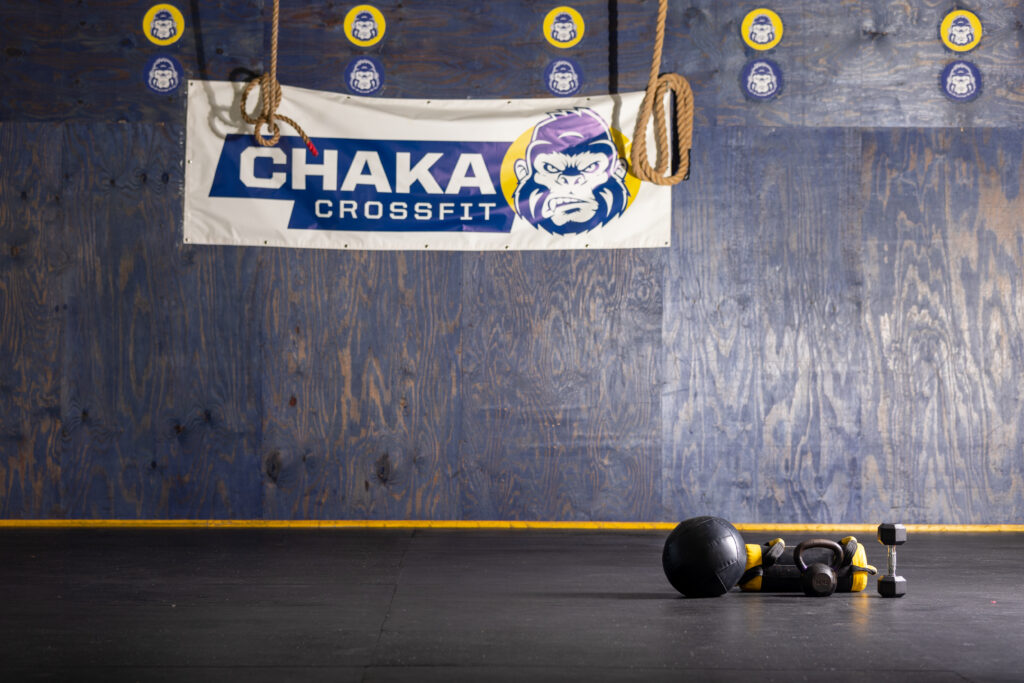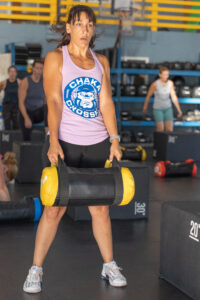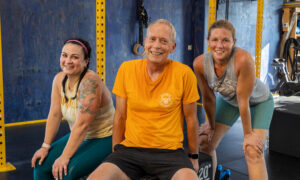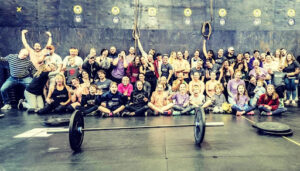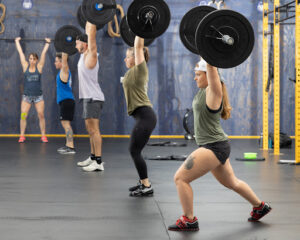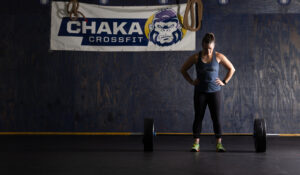As a CrossFit athlete, you understand the importance of mobility and flexibility in your training routine. In order to achieve peak performance and prevent injuries, incorporating targeted mobility and flexibility exercises is crucial. This blog post will outline some key tips to help you enhance your mobility and flexibility training, ultimately improving your overall CrossFit performance.
Key Takeaways:
- Consistent practice: Mobility and flexibility training should be incorporated into a CrossFit athlete’s routine regularly to improve performance and prevent injuries.
- Target specific areas: Identify areas of tightness or weakness and focus on mobility exercises that target those areas to enhance overall flexibility and movement efficiency.
- Use adequate warm-up: Prior to engaging in CrossFit workouts, utilize dynamic warm-up routines to prepare the body for the movements and help prevent strains or injuries.
Understanding Mobility and Flexibility
Defining Mobility and Flexibility
Defining mobility refers to the ability of a joint to move through its full range of motion, while flexibility is the ability of a muscle or group of muscles to lengthen, allowing for a greater range of motion. In simple terms, mobility is about the joint, and flexibility is about the muscle. Both are crucial for optimal athletic performance and injury prevention in CrossFit.
The Relationship Between Mobility, Flexibility, and Performance
Any CrossFit athlete knows that mobility and flexibility are key components of their training regimen. The two are interconnected and have a direct impact on performance. Improved mobility allows for better movement patterns, while increased flexibility can enhance strength and power production. By focusing on both aspects, athletes can optimize their training and minimize the risk of injuries.
Flexibility training should be incorporated into every CrossFit athlete’s routine to improve overall performance and prevent potential setbacks. Without adequate flexibility, athletes may struggle to perform movements with proper form, leading to decreased efficiency and potential injuries. By dedicating time to mobility and flexibility training, athletes can enhance their range of motion, movement quality, and overall athletic performance.
Assessing Your Current Mobility
You, as a CrossFit athlete, understand the crucial role that mobility and flexibility play in your performance and injury prevention. Assessing your current level of mobility is vital to identify areas that need improvement and to tailor your training accordingly.
Tools and Methods for Evaluating Mobility
Tools like the Functional Movement Screen (FMS), goniometers, and mobility apps can help you objectively assess your range of motion and flexibility. These tools provide specific data points that can guide your programming and track your progress over time. Methods such as the sit-and-reach test, deep squat assessment, and shoulder mobility tests are valuable in evaluating key areas for CrossFit movements like overhead squats, snatches, and muscle-ups.
Common Mobility Limitations in CrossFit Athletes
Any CrossFit athlete may experience common mobility limitations such as tight hip flexors, limited shoulder mobility, restricted ankle dorsiflexion, and poor thoracic spine mobility. These limitations can significantly impact your performance in movements like overhead squats, pistols, and kipping pull-ups.
It is vital to address these common mobility limitations through targeted mobility and flexibility training. Working on improving these areas will not only enhance your movement efficiency but also reduce your risk of injury in the long run.
Flexibility Fundamentals for CrossFit
The Role of Static and Dynamic Stretching
For CrossFit athletes, flexibility is a fundamental component that often gets overlooked in the quest for strength and speed. Incorporating both static and dynamic stretching into your routine can significantly help improve your range of motion and prevent injury. Static stretching involves holding a stretch for a period of time, helping to relax and lengthen the muscles. On the other hand, dynamic stretching involves moving parts of your body through a full range of motion, helping to improve flexibility and blood flow.
Incorporating Flexibility Work into Your Routine
Fundamentals in CrossFit training include not only building strength and endurance but also focusing on flexibility. Incorporating flexibility work into your routine can help enhance your performance and prevent injuries. By including stretching exercises before and after your workouts, you can improve your range of motion and promote recovery.
With consistency and dedication, you can gradually see improvements in your flexibility, which will benefit your overall performance in CrossFit. Make sure to dedicate time in each session specifically for flexibility work to help ensure you’re able to move efficiently and with reduced risk of injury.
Developing a Mobility Training Plan
Once again, when it comes to creating a mobility training plan for CrossFit athletes, it’s crucial to tailor the plan to individual needs. This involves setting specific goals, tracking progress, and customizing mobility exercises to address any weaknesses or imbalances in the athlete’s mobility.
Setting Goals and Tracking Progress
Any effective mobility training plan starts with setting clear and achievable goals. Athletes should identify areas of mobility they want to improve, whether it’s hip flexibility, shoulder mobility, or overall range of motion. By setting specific goals, athletes can track their progress over time and make adjustments to their training plan as needed. Keeping a training journal or using mobile apps can help athletes monitor their progress and stay accountable to their mobility goals.
Tailoring Mobility Exercises to Individual Needs
Mobility is not a one-size-fits-all approach. Each CrossFit athlete has unique needs when it comes to mobility, depending on their body structure, training history, and areas of weakness. It’s important to identify these individual needs and customize mobility exercises to address them specifically. This may involve incorporating specific stretches, mobility drills, or soft tissue work to improve range of motion and reduce the risk of injury.
To effectively tailor mobility exercises to individual needs, coaches and athletes can conduct movement assessments to identify areas of restriction or weakness that need to be addressed. By focusing on these specific areas, athletes can make targeted improvements in their mobility that directly translate to better performance in CrossFit movements.
Mobility Exercises for CrossFit Athletes
Many CrossFit athletes understand the importance of mobility and flexibility in their training routine. Incorporating specific mobility exercises can help improve range of motion, reduce the risk of injury, and enhance overall performance. Here are some key mobility exercises tailored for CrossFit athletes to include in their workout regimen.
Upper Body Mobility Drills
An integral part of any CrossFit athlete’s training routine is enhancing upper body mobility. Effective exercises to include are shoulder dislocates, arm circles, and thoracic spine rotations. These drills help increase flexibility in the shoulders, improve range of motion in the arms, and enhance thoracic spine mobility for better overhead movements.
Lower Body Mobility Drills
Bodyweight squats, lunges, and hip flexor stretches are imperative for improving lower body mobility in CrossFit athletes. These drills help increase flexibility in the hips, improve squat depth, and reduce the risk of lower body injuries during dynamic movements like snatches and cleans. Incorporating these exercises into your warm-up routine can make a significant difference in your performance.
Lower body mobility drills are crucial for CrossFit athletes as they involve a lot of powerful movements that require flexibility and stability in the lower body. By regularly practicing these drills, athletes can improve their squatting technique, enhance their jumping ability, and prevent common lower body injuries.
Spine and Core Mobility Strategies
Upper body mobility is not complete without addressing spine and core mobility for CrossFit athletes. Exercises such as cat-cow stretches, bird dogs, and planks are excellent for enhancing spine flexibility and core stability. A strong and mobile core is key for maintaining proper form in movements like deadlifts, pull-ups, and handstand push-ups.
Athletes should prioritize spine and core mobility to ensure they have a solid foundation for all their CrossFit movements. By incorporating these strategies into their training routine, athletes can improve their posture, prevent back injuries, and enhance their overall performance in WODs.
It is imperative for CrossFit athletes to focus on a well-rounded mobility routine that targets different areas of the body. By incorporating these mobility exercises into their training regimen, athletes can enhance their flexibility, prevent injuries, and optimize their performance during workouts. Keep in mind, consistency is key when it comes to improving mobility, so make sure to include these drills in your daily warm-up routine.
Integrating Mobility into CrossFit Training
Despite the intense nature of CrossFit workouts, mobility should not be overlooked by athletes. Integrating mobility exercises into your CrossFit training regimen is crucial for improving performance, preventing injuries, and enhancing overall movement quality.
Pre-workout Mobility Routines
Integrating pre-workout mobility routines into your CrossFit warm-up can help prime your body for the demands of the workout ahead. Focus on dynamic stretches and mobility drills that target specific areas of the body that will be used during the workout. This can include movements like leg swings, arm circles, hip openers, and thoracic spine rotations.
Post-workout Recovery Techniques
Recovery is an necessary component of any CrossFit athlete’s training program. Post-workout recovery techniques, such as foam rolling, stretching, and cool-down exercises, can help reduce muscle soreness, improve flexibility, and speed up the recovery process. Taking the time to incorporate these techniques into your post-workout routine can make a significant difference in how your body feels and performs in the long run.
Post-workout recovery techniques are not just about feeling better after a tough workout. They play a crucial role in injury prevention and long-term athletic development. By prioritizing recovery, athletes can ensure that their bodies are adequately prepared for the next training session, ultimately leading to better performance and progress in their fitness journey.
Active Rest Day Mobility Sessions
CrossFit athletes often have a difficult time sitting still, even on rest days. Instead of pushing through another intense workout, consider incorporating active rest day mobility sessions into your routine. These sessions can involve gentle stretching, yoga, or mobility drills that focus on improving range of motion, reducing muscle tightness, and promoting recovery without putting additional stress on the body.
Active rest day mobility sessions are a great way to keep your body moving and maintain flexibility and mobility outside of regular training days. By engaging in these sessions, athletes can continue to work on their movement quality, prevent stiffness, and support overall recovery and well-being.
Overcoming Plateaus and Injury Prevention
Adapting Your Mobility Training for Plateaus
Plateaus are common in any training regimen, including mobility training. If you find yourself hitting a plateau in your progress, it may be time to reassess your current routine and make some adjustments. One key tip for overcoming plateaus in mobility training is to introduce variety into your routine. Try incorporating different mobility exercises, changing up the intensity or duration of your stretches, or exploring new techniques such as foam rolling or dynamic stretching.
Mobility Training for Injury Prevention and Rehabilitation
Now, when it comes to injury prevention and rehabilitation, mobility training plays a crucial role in keeping CrossFit athletes healthy and performing at their best. By improving flexibility, joint range of motion, and overall mobility, athletes can reduce their risk of injury and recover more quickly from any potential setbacks. It’s necessary to include mobility exercises that target specific areas of the body prone to injury in your training routine, such as the shoulders, hips, and ankles.
Training with a focus on injury prevention can also help athletes address any underlying mobility limitations that may be contributing to their risk of injury. Incorporating mobility exercises that improve stability, balance, and muscular coordination can further enhance an athlete’s ability to move efficiently and safely during CrossFit workouts.
Advanced Tips and Techniques
- Incorporating Equipment into Mobility Training
Tips: Techniques: Utilize resistance bands Use bands for assisted stretching to deepen the stretch Foam rollers and lacrosse balls Target trigger points for myofascial release and improved range of motion Yoga blocks or straps Aid in achieving proper alignment and posture during stretches
Incorporating Equipment into Mobility Training
Tips: When integrating equipment into your mobility training, it’s important to understand how each tool can enhance your flexibility routine. Utilizing resistance bands can provide assistance in achieving deeper stretches, while foam rollers and lacrosse balls can target specific areas for myofascial release. Incorporating yoga blocks or straps can also help you maintain proper alignment during stretches.
Mobility and Mindfulness: The Mental Aspect of Flexibility Training
Incorporating mindfulness practices into your mobility training can elevate your overall performance as a CrossFit athlete. By combining mental focus and relaxation techniques during your flexibility routine, you can improve mind-body connection, reduce stress, and enhance your proprioception. Establishing a mindful approach to mobility training can lead to better movement patterns, increased body awareness, and a more fluid range of motion.
Another key aspect of the mental side of flexibility training is visualization. By visualizing yourself moving with ease and grace through various exercises and stretches, you can help rewire your brain to support those movements. Practicing visualization techniques alongside your mobility training can further enhance the effectiveness of your overall flexibility routine.
Summing up
Presently, we have explored the imperative tips for incorporating mobility and flexibility training into a CrossFit athlete’s routine. By prioritizing dynamic stretches, foam rolling, and mobility drills, athletes can improve their range of motion, reduce the risk of injuries, and enhance their overall performance. Consistency and proper technique are key to seeing long-term benefits from this type of training.
It is crucial for CrossFit athletes to understand the importance of including mobility and flexibility work alongside their strength and conditioning program. With a well-rounded approach to training, athletes can optimize their physical capabilities, prevent setbacks, and continue to progress in their athletic endeavors. By implementing these key tips, athletes can take their performance to the next level and reach their full potential in CrossFit.
FAQ
Q: Why is mobility and flexibility training important for CrossFit athletes?
A: Mobility and flexibility training are crucial for CrossFit athletes as they help improve movement efficiency, prevent injuries, and enhance performance. By enhancing range of motion and joint stability, athletes can move more effectively during workouts and reduce the risk of strains or sprains.
Q: What are some key tips for effective mobility and flexibility training for CrossFit athletes?
A: Some key tips for effective mobility and flexibility training for CrossFit athletes include incorporating a variety of dynamic and static stretching exercises, focusing on commonly tight areas such as hips, shoulders, and hamstrings, utilizing tools like foam rollers and resistance bands, and consistently practicing mobility drills to improve overall flexibility.
Q: How often should CrossFit athletes incorporate mobility and flexibility training into their routine?
A: CrossFit athletes should aim to incorporate mobility and flexibility training into their routine at least 3-5 times per week, either before or after their regular workouts. This consistent practice will help maintain and improve range of motion, reduce muscle stiffness, and enhance overall performance in CrossFit workouts.

